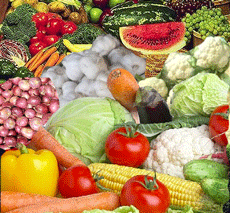WPI hits 5-month high as veg prices batter ‘aam admi’
14 Aug 2013
India's headline annual inflation rate rose to a five-month high of 5.79 per cent in July - the second month in a row that the Wholesale Price Index has shown a rising trend - on the back of rising food prices, particularly vegetables, and costlier oil imports due to a weak rupee.
 The latest reading takes the WPI beyond the Reserve Bank of India's 'comfort level; of 4 to 5 per cent.
The latest reading takes the WPI beyond the Reserve Bank of India's 'comfort level; of 4 to 5 per cent.
The rupee has lost around 12 per cent to the dollar since the start of May. A depreciation of 10 per cent in the rupee would add 1.5 to two percentage points to the headline inflation rate.
May's WPI reading was revised down to 4.58 per cent from 4.7 per cent.
The WPI inflation in the food articles category hit double-digits at 11.91 per cent, driven mainly by price rise in onions, cereals and rice.
The rate of price rise in food articles, which has a 14.34 per cent share in the WPI basket, was at 9.74 per cent in June. The inflation in the food articles category rose for the third straight month.
Onion prices in July shot up by 145 per cent on an annual basis. These had risen by 114 per cent in the previous month as against the same period last year. The price of onions, ubiquitous in the diet of average Indians, has broken governments in the past.
Vegetables prices overall went up by 46.59 per cent during the month, from 16.47 per cent in June.
Inflation in the manufactured items category showed a marginal rise to 2.81 per cent in July, from 2.75 per cent in June.
The non-food articles category, which includes fibre, oilseeds and minerals, saw a decline in inflation to 5.51 per cent, from 7.57 per cent in June.
Inflation in rice stood at 21.15 per cent in July, against 19.11 per cent in the previous month. Prices of cereals rose to 17.66 per cent from 17.18 per cent in June.
The slowdown in the economy is increasingly palpable, as manufacturing inflation or the Index of Industrial Production rose to 2.81 per cent on an annual basis from 2.75 per cent in June, according to figures released on Monday.
The RBI, unlike other central banks, mainly uses the wholesale price index for setting its monetary policy, which is due for review next month.
Data released on Monday showed that price inflation moderated in July, but remained high at 9.64 per cent.
On Tuesday, India hiked the import tax on gold to a record 10 per cent and also raised the tariff on silver to curb the current account deficit, which is also at record levels.
A day earlier, the government announced plans to make it easier for corporates to raise overseas loans, which could bring in an additional $11 billion this fiscal year to help finance the current account deficit and take pressure off the rupee.
The rupee did not react to the WPI data. It closed at 61.19/20 on Tuesday.

.webp)


.webp)


























